These are preliminary designs for new games, still undergoing development and testing. The rules and game boards are subject to revision based on feedback and playtesting. All game designs incorporate the ZOP mechanism to enhance player engagement.
A key feature of these games is the potential for rule customization. Players can adapt the rules to suit their needs and preferences, making the games accessible and enjoyable for a wider range of players.
This adaptable design is especially useful in scenarios like adult-child gameplay. Players can adjust parameters for balance and complexity, allowing a more inclusive and engaging experience for participants of different ages and skill levels.
Numerous games can be easily created for the ZOP system based on a few simple rules. This is only a small selection, as additional elements such as dice, timers, and other game components can be incorporated. The possibilities are virtually limitless. Inspiration can be drawn from existing games like chess, Snakes and Ladders, puzzles, and others.
Basic Unit: The Stone
The basic unit is a stone. Stones can have different meanings depending on their position on the rotators or may contain symbols, images, letters, etc. They can function like chess pieces or puzzle tiles. Stones can be owned by individual players. If certain stones are not relevant to a game, they can be omitted from the rotators; these are considered "fictitious stones."
Rotators and Game Boards
Individual rotators can be arranged in various configurations to create game boards tailored to specific games. Examples of game boards, with rotators marked as crosses, are shown below (diagrams not included).
Straight Track
Oval Track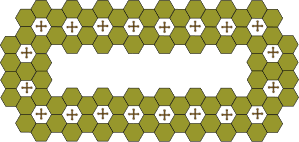
Small Triangle (Type 1 and Type 2)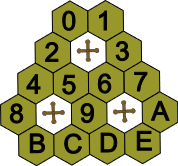
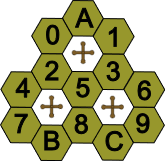
Large Triangle (Type 2)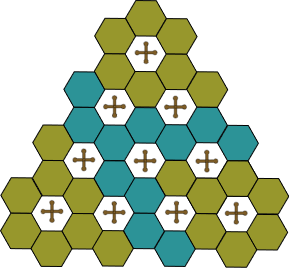
5x5 (Pentagon)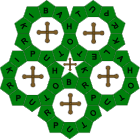
Large 23-Square Board (for chess-style games)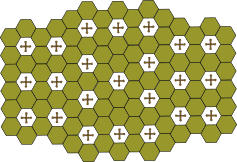
Players take turns making moves, subject to various rule-based restrictions such as:
- A player can only move stones from rotators containing their own stones.
- A player can only rotate a rotator by a specific number of stones.
- A player can only rotate a rotator in a certain direction and by a specific number of steps.
- A player cannot move stones from rotators containing the opponent's stones.
- A player cannot move a rotator that was moved by the opponent on their previous turn.
- A player cannot move a rotator that is blocked; for example, some rotators may be temporarily immobile, or an opponent may mark rotators that cannot be moved.
Some game types may allow for non-standard moves, such as exchanging two rotators or manually swapping stones.
Moving a rotator changes the positions of the stones. The game objective could involve moving stones to specific locations, creating words from adjacent lettered stones, or capturing opponent's stones by sandwiching them between two of one's own stones (as in chess).
The core concept is that the game device is designed to allow simultaneous movement of an entire circle of stones, sometimes rotating both one's own and opponent's stones.